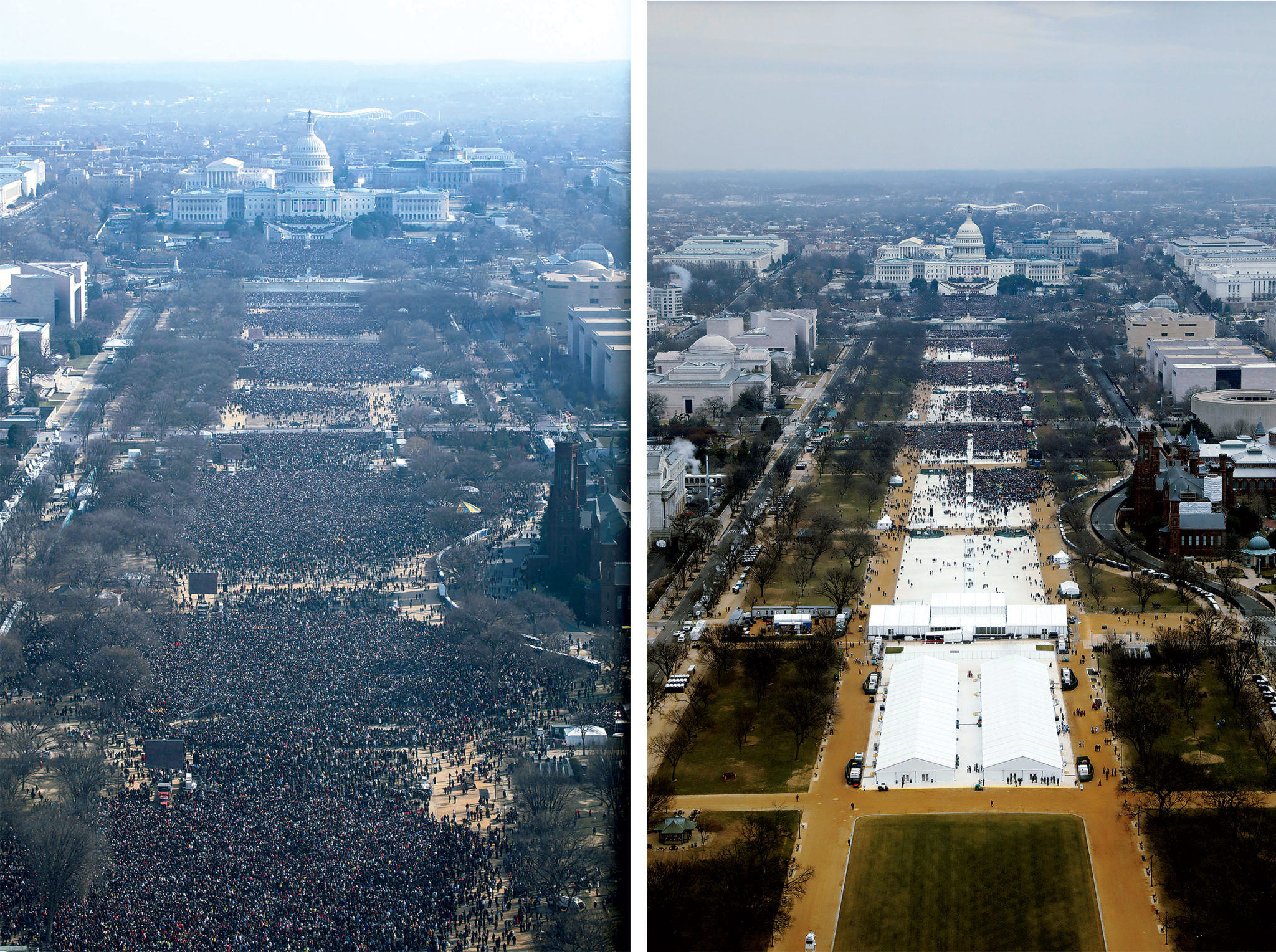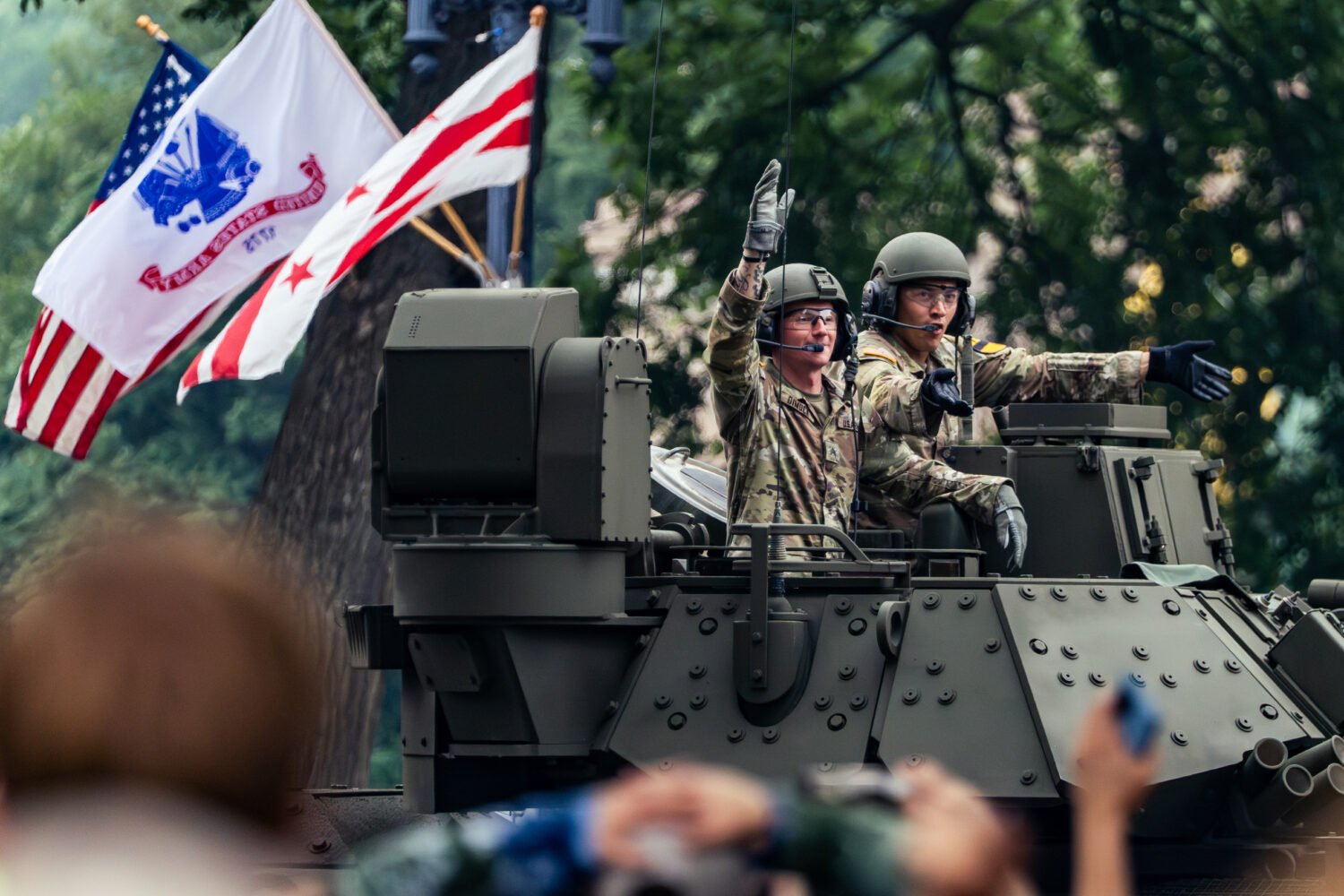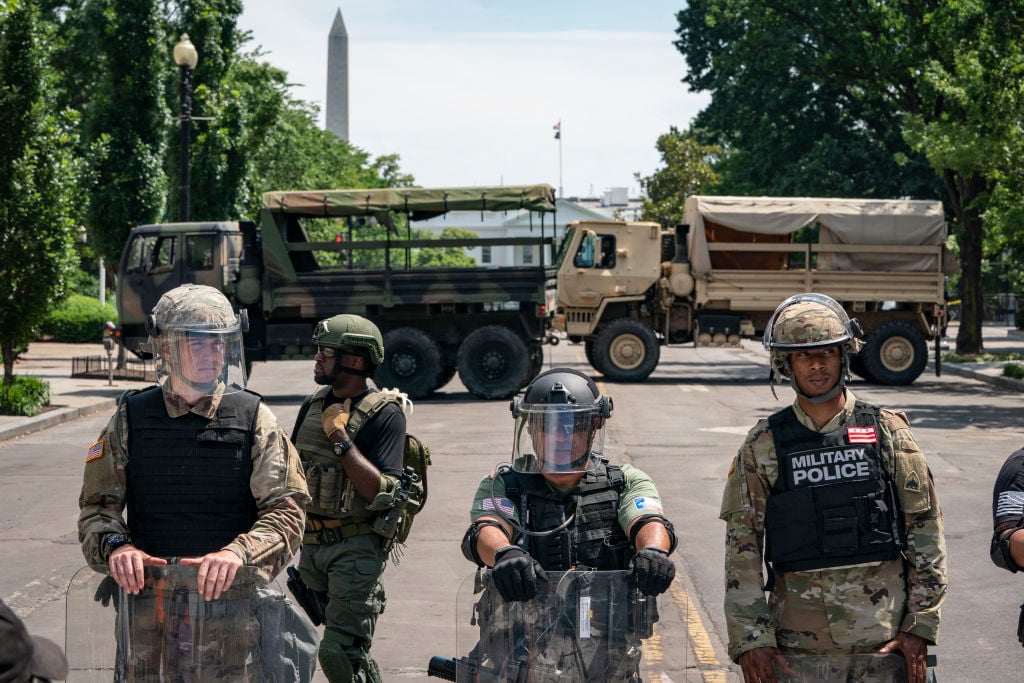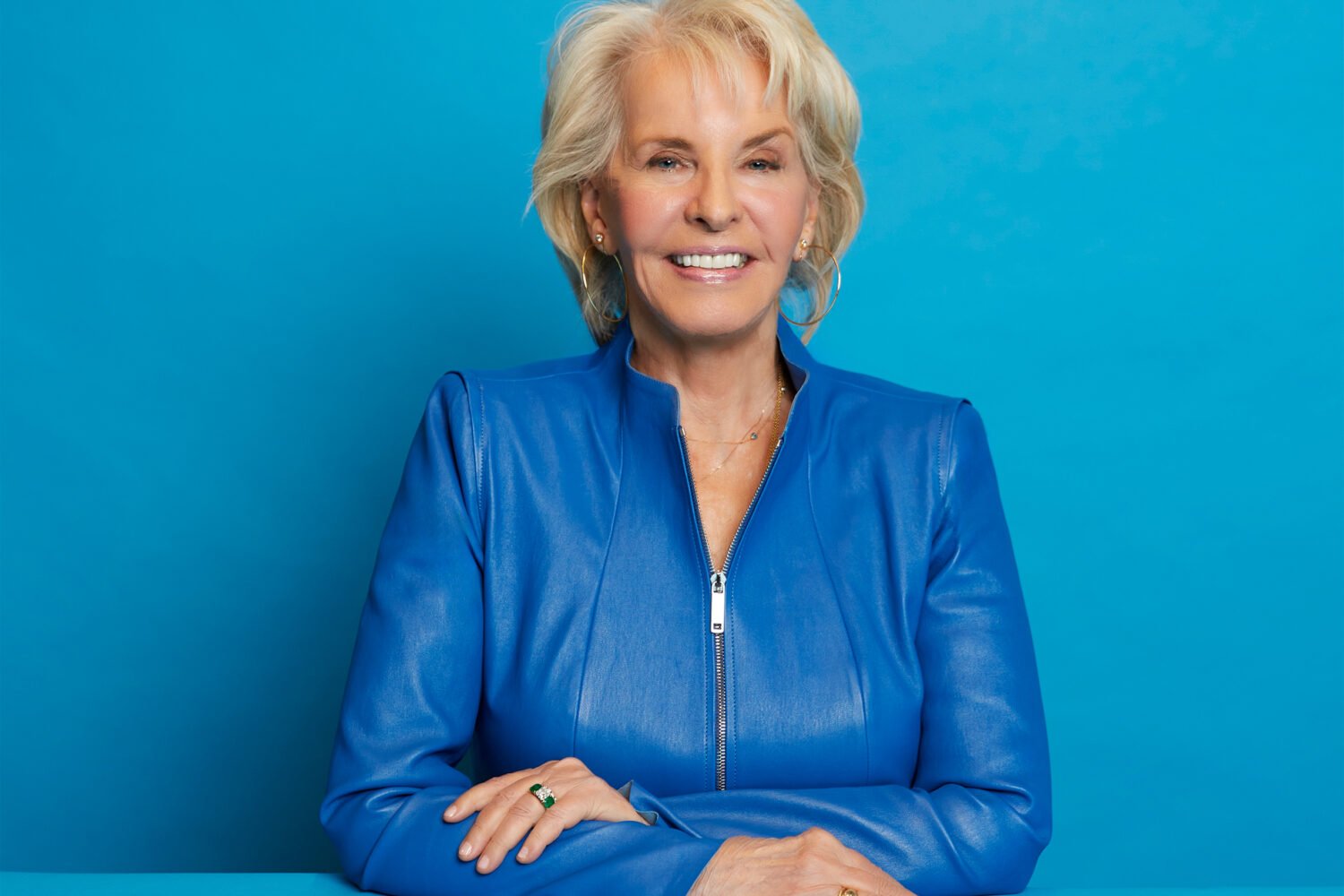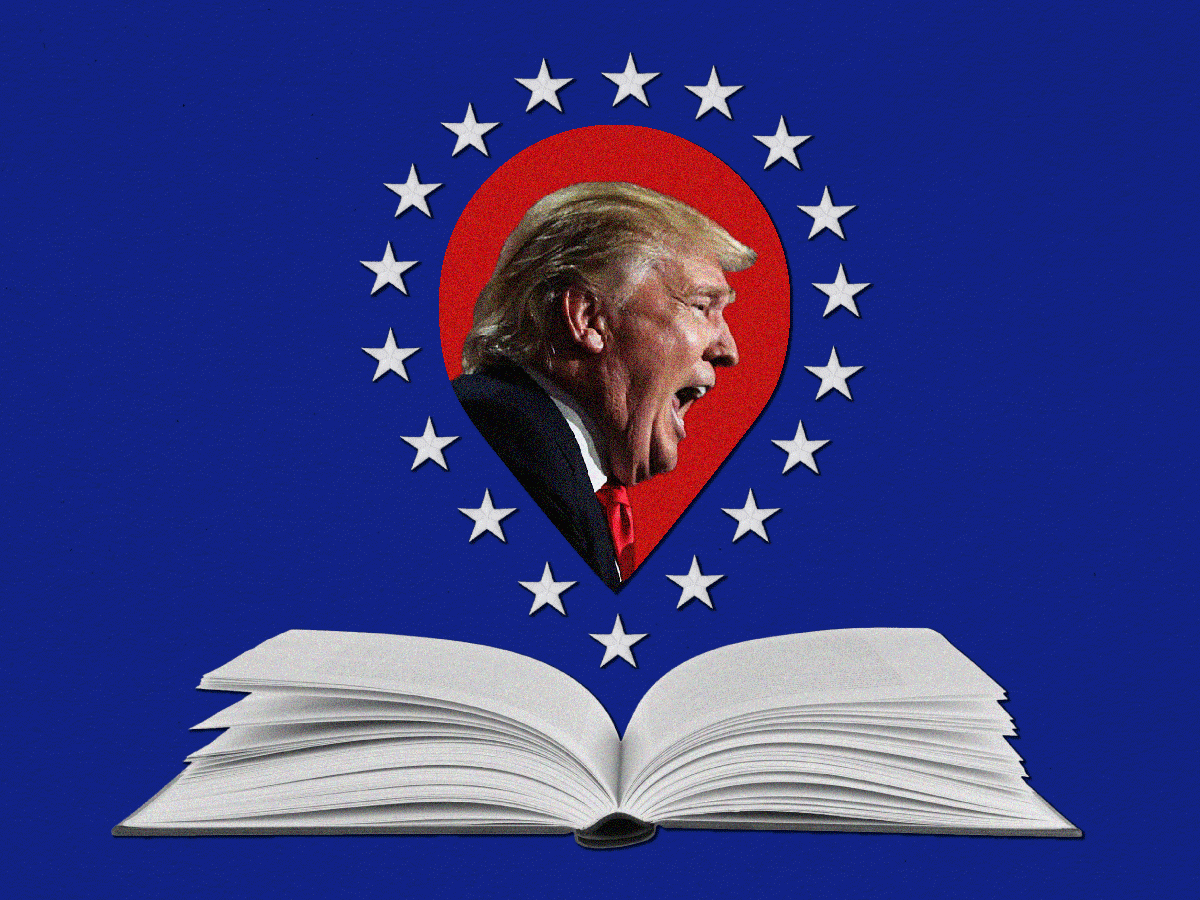To explore more of “Our Year of Trump,” a look at how our city has dealt with 12 exhausting months, click here.
1. Politics Seeps into Everything

Sometimes a hoagie is just a hoagie. But after Taylor Gourmet cofounder Casey Patten visited the White House in late January, eating at the area sandwich chain—or deciding not to—became an explicitly political act. In the face of social-media outrage, Patten spent days rationalizing the visit to his employees and customers.
This is new. Washington’s national reputation is as a place obsessed with politics. But locals actually know better—or maybe we used to. Compared with a lot of people elsewhere in our polarized country, we’re obliged by professional and neighborly self-interest to be comfortable with people from the other side.
Thus, not so long ago, Washington was a city where, whatever your politics, you generally didn’t freak over the pomp and circumstance and stagecraft of whatever administration held power. You understood that having politicos patronize your business—or even use it for a photo op—was just part of the deal.
In 2017, normally apolitical entities are being weaponized for political means. A meal in the Trump hotel’s BLT Prime signals one thing. A meal at one of José Andrés’s places—he’s gone from being a mere maestro of small plates to a courthouse foe of the President—signals another. When Ivanka Trump visited Solidcore, the gym’s owner blasted her on Facebook. A DC bar, the Bird, has been offering drink specials after every high-profile exit from the Trump administration.
For some business owners, this means that politics—a major local industry—is too hot to touch. Last spring, an apartment building opposite Nationals Park became Drudge Report fodder after residents festooned their balconies with competing pro- and anti-Trump banners. Management finally banned all banners, even the baseball ones that had predominated before the last election.
2. Kalorama is the New Georgetown
For years, Presidents and their cohort have taken to unofficially designating a certain neighborhood as their primary turf. FDR’s New Dealers had Georgetown. George W. Bush’s crowd had McLean.
The Obamas, in many ways, defied this tradition—the First Couple traversed just about every corner of the city, trying different restaurants, bookstores, and gyms. Their staffers followed suit.
Yet for all of President Trump’s bluster about disruption, his presidency seems to have helped reintroduce that old notion of a power corridor. Washington’s center of gravity now rests in and around Kalorama, the leafy enclave just off Embassy Row.
Among the players who live there are Ivanka Trump and Jared Kushner, who rent a $15,000-a-month property from a Chilean billionaire, and Secretary of State Rex Tillerson, who paid $5.6 million for a Colonial Revival home. Other bigwigs are nearby in Massachusetts Heights.
On the one hand, this all seems improbable, given Trump’s nationalist rhetoric. Kalorama is around the corner from a mosque, is dense with embassies, and also houses Barack Obama (plus Jeff Bezos, who paid $23 million in cash for the former Textile Museum). On the other hand, it’s worth remembering that while recent GOP teams traced their cultural style to Sun Belt suburbia, Trump’s Cabinet is thick with plutocrats used to life in the gilded stretches of global cities like New York.
How do longtime Kalorama residents feel about the neighborhood’s new sheen? Says PR guru Gloria Story Dittus: “I certainly feel much safer walking my dog at night with Secret Service on almost every block.”
3. There Actually Are New Ideas in Town
Washington has long been home to the ideas industry—the think tanks and scholarly hubs that develop policy papers and try to lend coherence to the prevailing ideological mood. From the moment he announced his candidacy, Donald Trump made that task difficult. His platform was short on policy details, his appeal rooted in something visceral.
Which isn’t to say there was no there there. In various ways, especially around foreign affairs and immigration, he represented a major break. That’s what made Julius Krein’s endeavor a bold one—with significance for DC’s ideas industry. In February, the 31-year-old Harvard grad launched American Affairs, a journal aiming to lend intellectual heft to Trumpism.
Alas, it didn’t go as planned. Today, Krein says that despite his best efforts, there is no such thing. The term now “just means whatever Trump does or says,” with no real intellectual underpinning.
Yet this doesn’t mean Krein’s project has failed, just that Trump won’t be its North Star—perhaps a good thing, because few politicians can ever serve that purpose. One of Trump’s undeniable contributions to US politics, Krein says, is “that he exposed the weakness of conventional conservatism.” That has opened fascinating fissures that have led to real (if ugly) debates, such as the on-air slugfest between populist-friendly Fox News host Tucker Carlson and neocon Max Boot.
All of which suggests there’s a theoretical vacuum that Krein feels well positioned to fill. So he’ll continue to articulate—and perhaps institutionalize in the Washington firmament—what he thinks a meaningful alternative to the “neoliberal consensus” looks like.
4. We Can’t Get Enough of the Guy
For obvious reasons, DC has always been a place where political books sell. But we also love our history, our thrillers, our foreign affairs. This year, the market is so focused on the Trump era that little oxygen is left.
“We’re busier than ever,” says Matt Latimer, co-founder of the conservative-leaning literary agency Javelin. In part that’s because the publishing industry got the 2016 election wrong. “Publishers, like everyone else, assumed Hillary Clinton was going to be President. So they bought a lot of books that won’t be written now.”
Trump fans have plenty of options, but foes may have even more. “There are like 1,500 proposals out there about how to resist Trump,” Latimer says. Even the comparatively small amount of other space in the market is tied, indirectly, to the year’s main subject. Political nostalgia— that is, books that let politics junkies escape to a supposedly simpler time—is hot, too. Latimer recently sold volumes about George Washington, Nancy Reagan, and Eleanor Roosevelt.
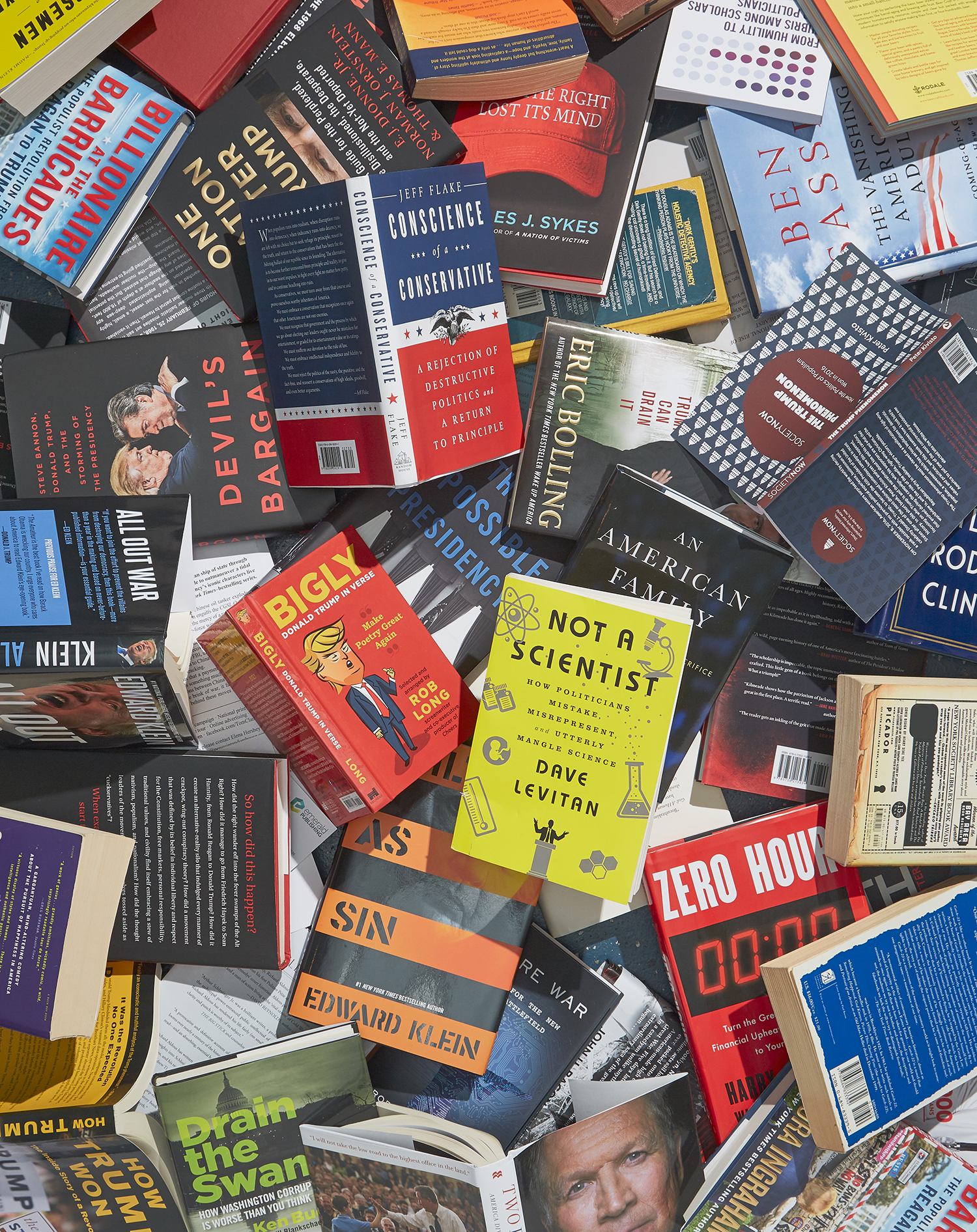
5. Stress Levels Eventually Recede
From last November through the early part of this summer, Tina Alster saw a notable uptick in patients—one or two a day—coming to her K Street dermatology practice for Botox. Alster wasn’t injecting their crow’s-feet; she was using Botox to help soften tense jaws. From what she could gather, the stress of President Trump’s election, inauguration, and first few months in office was causing constant teeth grinding—and aching jaws. The flow of these patients has since ebbed. “I think people have just gotten numbed to the fact that there’s upheaval every single day,” says Alster. “I think Trump has raised the bar on that kind of stress, and people are kind of getting used to it.”
6. Power No Longer Guarantees Party Invites
For a long time, shifting politics in the White House never seemed to affect who was welcome at the dinner parties of permanent Washington.
Not so this year. Donald Trump’s campaigning against the swamp wasn’t the issue—everyone does that. It’s the stuff since then: the nasty gibes at lawmakers, the declaration that the press corps was “the enemy of the American people.”
The ringleaders of Washington’s social scene are not amused.
Their frostiness extends to the likes of Trump’s daughter. “It’s been very difficult for Ivanka and Jared, who were the golden couple in New York City before they came down,” says Sally Quinn, a longtime observer—and center—of DC’s social scene. Now if Trump’s favored daughter goes to dinner, “people don’t even want to talk to her. . . . I think people are embarrassed. Like, what do you say—‘Hey, great job your dad is doing’?”
Or consider Treasury Secretary Steven Mnuchin and his model/actress wife, Louise Linton—the kind of couple who in other times might have been a draw. But Linton went on Instagram and haughtily taunted a commenter by talking up her own wealth. “I’ve heard she’s friends with, like, her SoulCycle instructors,” meows another frequent DC party host.
It’s not as though all Trump staffers are black-balled—it’s just that there’s unprecedented anxiety about cavorting with boldface names. One prolific hostess notes that the national-security team has “genuinely good people” but adds, “If I have a Trump person in my house, they usually aren’t recognizable, but I will still go out of my way to make sure people don’t know that person works for Trump.”
One exception? Defense Secretary Jim Mattis. “I remember at David Bradley’s [White House Correspondents’ Association dinner] party, Mattis got a round of applause,” says the hostess. “It was like, thank God you’re there.”
“Everyone would be thrilled to have him over,” Quinn agrees. But alas, the so-called “warrior monk,” she says, is “not a party boy.”
7. The First Family Isn’t Faking
Living in the White House has to be one of the most unusual existences there is.
For many people who have become President, the lives they led before arriving at 1600 Pennsylvania Avenue were pretty unusual, too. Yet the conventions of modern Washington require that the First Family be cast in the role of the ideal American family, hosting neighborhood Easter-egg rolls, sending family Christmas cards, playing wholesome games of touch football during a well-photographed vacation. Odd, maybe, but the convention has survived JFK, Nixon, and Monica Lewinsky.
Trump, however, is different: multiple kids with multiple wives, a First Lady who opted against immediately moving to town, a dynastic brand that defies the old division between the domestic and the public.
Good for them. There was always something a mite childish about Americans’ expectations for the First Family. Like them or not, the Trumps lead lives utterly dissimilar to those of most citizens—and unlike prior presidential families, they’re not going through the charade of pretending it’s any different.
8. Being Careful What You Say
“I’m very much a Trump supporter. But as a guy who lives and works in the DC area, I’ve learned not to open my mouth about politics until I know who I’m talking to. Especially with my customers. I don’t want them to label me a dumb guy, because I’m pretty smart. . . . When I’m out and about, I rarely say anything pro-Trump. I may say something pro-policy but I won’t use his name. I might say, ‘It will be great when we can have lower-cost health coverage.’ I’ll be careful what I say. In this area, people come right out and hammer Trump. To some degree, I’m frustrated by it. Sometimes you can’t say anything—you feel like you’re opening up a can of worms. . . . If [a client] asks my opinion, I’ll give my honest opinion. But that doesn’t happen often. Mostly I just listen to them and say, ‘Oh, that’s nice.’ I don’t want to get into an argument. I’m polite. I won’t say anything inflammatory, like ‘Make America Great Again.’ Or wear a red hat.”
—A local general contractor

9. Disruptions Even a Hater Could Love
In April, as a tuxedo-clad crowd gathered for the White House Correspondents’ Association dinner, the President was heading to Pennsylvania for a rally. The news played as yet another Trumpian attack on a Washington tradition, a less noxious counterpart to his refusal to honor the tradition of not maligning war-hero senators. But that’s nonsense. For years, earnest critics—the sort of folks who largely despise Donald Trump—also maligned the dinner as an unseemly case of journalists getting too chummy with the people they’re supposed to watchdog. Trump broke that particular mold, or at least added a dollop of self-awareness to it.
10. This Is Normal Now
At times, Washington in 2017 has felt like one of those 1960s social-science experiments —in which we’re the unwitting subjects. The setup: The President does something shocking. Next, critics declare, “This isn’t normal.”
So the research question is: Do we believe them?
The assertions of abnormality don’t come just from wild-eyed resisters and TV hosts. Take the July 13 e-mail newsletter from Mike Allen of Axios, a fixture of permanent, bipartisan DC if ever there was one. In ten furious bullet points, Allen gamely tried to remind readers of the aberrance of a broad range of recent news items, from the banal (“It’s not normal for the President to interrupt his day to watch the press briefing on TV”) to the murky (“It’s not normal for the presumptive nominee’s son to take a meeting with a Russian lawyer who claims she has dirt compiled by Russian governmental forces”) to the embarrassing (“It’s not normal for the President to hold a Cabinet meeting that consists of his staff gushing over him”) to the outrageous (“It’s not normal for the President to attack TV news hosts by name, including a personal attack on a woman’s intellect and appearance”).
Alas, actual social science suggests that assertions about what is and isn’t normal—no matter whom they come from—are unlikely to sway people for long. “As things become seen as more frequent, they become ‘normalized,’ ” says Robert Cialdini, a social psychologist at Arizona State University whose 1984 book, Influence, is considered the definitive work on social persuasion. “They are perceived as more legitimate as a result.”
In other words, whether you like the new era or not, get used to getting used to it.
This article appears in the December 2017 issue of Washingtonian.

